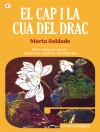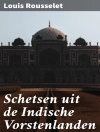In ‘Glimpses of Unfamiliar Japan: Second Series, ‘ Lafcadio Hearn continues his exploration of Japan’s rich cultural tapestry, offering a vivid canvas of insights that transcend mere travelogue. Written with Hearn’s signature lyrical prose, this work delves into diverse themes such as the intricate relationship between nature and spirituality, the subtleties of Japanese customs, and the haunting beauty of its landscapes. Through a series of essays, Hearn captures the essence of a society in transition, navigating the space where ancient traditions coexist with the encroaching wave of modernization, thereby inviting readers into a world both foreign and profoundly illuminating. Lafcadio Hearn, a Greek-Irish writer and journalist, became a naturalized Japanese citizen, immersing himself deeply in the cultural nuances of his adopted homeland. His unique perspective as an outsider allowed him to examine and articulate the complexities of Japanese life with empathy and depth. Hearn’s extensive background in literature, folklore, and art, coupled with personal experiences of alienation, informed his narrative style, making him not just an observer but a passionate advocate for understanding Japanese culture. This book is an essential read for anyone fascinated by cross-cultural exchanges and the beauty of the unfamiliar. Hearn’s eloquence provides not only an enlightening perspective on Japan at the turn of the 20th century but also a timeless meditation on the universal human experience. Readers seeking to deepen their appreciation of Japanese culture will find Hearn’s insights both compelling and transformative.
Yazar hakkında
Lafcadio Hearn (1850–1904), also known by the Japanese name Koizumi Yakumo, was a celebrated writer known for his profound influence in introducing Japanese culture and literature to the Western world. Born on the Greek island of Lefkada to an Irish father and Greek mother, Hearn immigrated to the United States in his teens, and later moved to Japan, where he became a naturalized citizen and married a Japanese woman. Hearn’s literary work reflects a deep immersion into the culture and ethos of his adopted home. His seminal work, ‘Glimpses of Unfamiliar Japan: Second Series’ (1894), offers sensitive and elaborate accounts of his observations and experiences in Japan, enfolding his readers into intricately depicted scenes and traditionally esoteric cultural aspects of the late 19th century Japan. A master of narrative style, Hearn’s writing melds journalistic keenness with romantic lyricism, presenting a vivid, ethereal, and at times haunting portrait of Japanese customs, myths, and the everyday life of its people. His works continue to be esteemed for their contribution to transcultural understanding and remain essential readings for those interested in the interplay between East and West during a pivotal period of cultural exchange.












